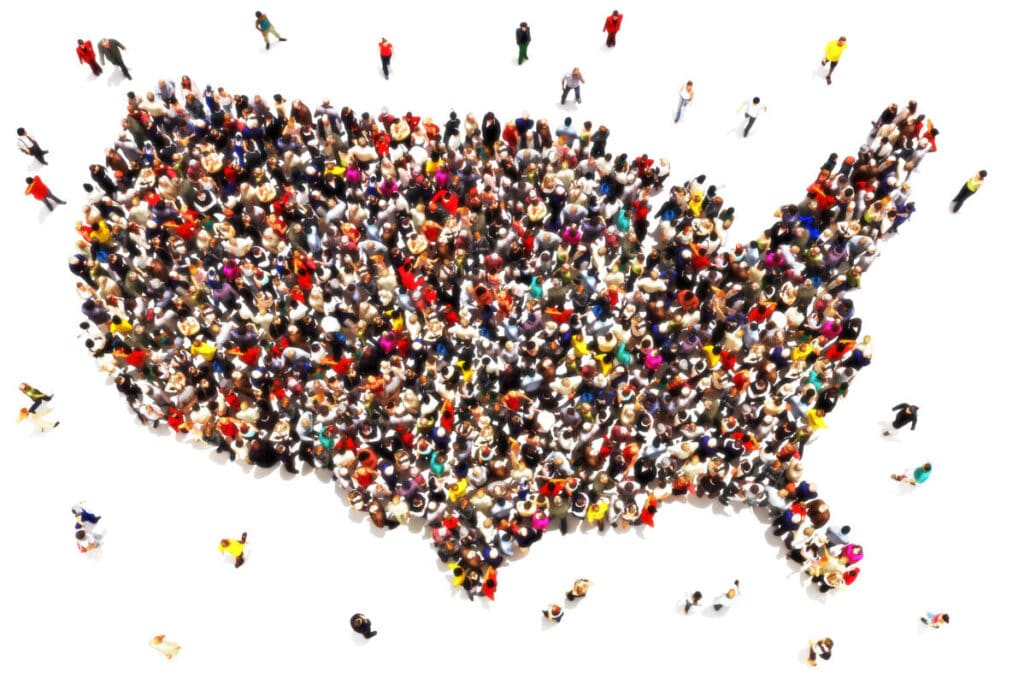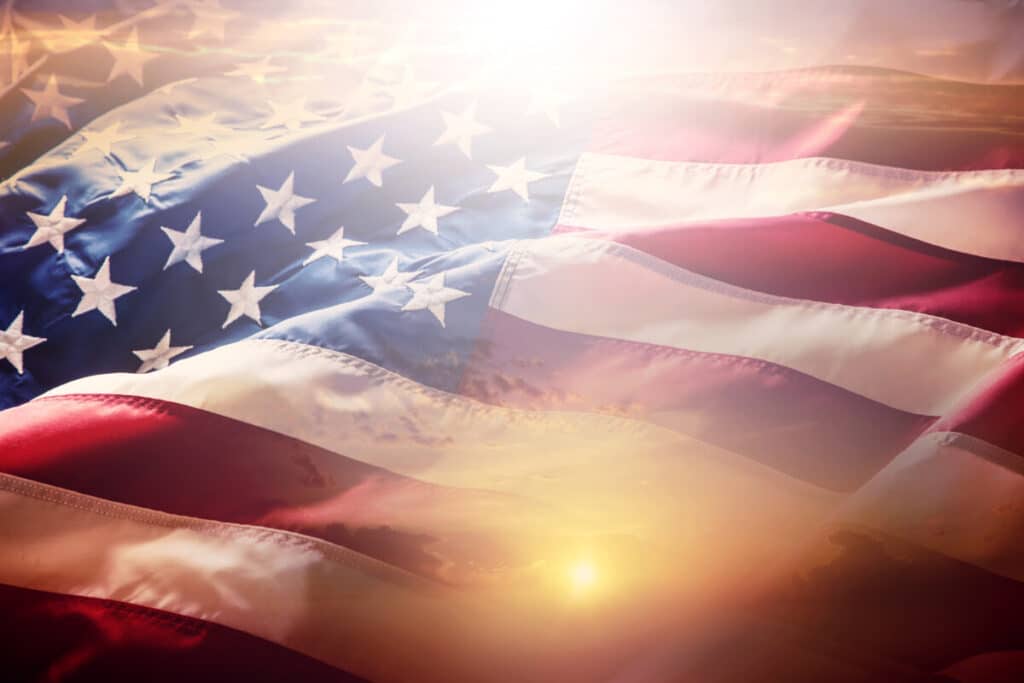Do Students Still Recite the Pledge of Allegiance in School?
The Pledge of Allegiance has developed a complicated history in recent years. While many believe that its recitation is an important means of kindling patriotism in our youth, others protest that it violates the right to freedom of speech. However, do students still recite the Pledge of Allegiance in school?
Today, students still recite the Pledge of Allegiance in classrooms throughout the United States, though virtual learning has recently complicated this morning routine. Students with religious conflicts or opposed personal convictions are not compelled to join their peers in reciting it.
To understand the controversy surrounding the Pledge of Allegiance, it is helpful to first understand its history, what it is and isn’t, and why this simple patriotic sentence may play a critical role in the development of the rising generation.
The History of the Pledge of Allegiance
The Pledge of Allegiance is a single sentence recited throughout the United States in schools, at public events, during patriotic ceremonies, and so forth. It contains 31 carefully selected words:
“I pledge allegiance to the flag of the United States of America and to the Republic for which it stands, one nation under God, indivisible, with liberty and justice for all.“
– Britannica
The pledge was originally published in a youth magazine, The Youth’s Companion, in 1892. Attributed to a Baptist minister by the name of Francis Bellamy, the pledge was intended to commemorate the 400th anniversary of Christopher Columbus’s voyage to the Americas. Its original wording was: “I pledge allegiance to my flag and to the Republic for which it stands, one nation, indivisible, with liberty and justice for all.”
Over the years, phrases in the pledge have been added and substituted. In 1924, the phrase “my flag” was replaced with the phrase “the flag of the United States of America” to help clarify the focus of the recitation and to promote the American ideal of unity. By 1942, the United States government officially recognized the pledge as an American symbol of patriotism and promptly ruled that no American should be compelled to recite it against his or her will.
This ruling originated in the 1943 Supreme Court case West Virginia Board of Education v. Barnette. On grounds of religious beliefs surrounding symbols and ceremonies, students of the Jehovah’s Witness faith refused to stand alongside their peers and recite the pledge. Though this ruling caused a stir among Americans who felt that the protest was disrespectful, it was a critical move in upholding both religious freedom and freedom of speech.
In short, it upheld the First Amendment, meaning that the American government can neither prohibit nor compel any form of speech.
In 1954, nearly sixty years after the Pledge of Allegiance had first been penned, Congress made one final, bold change, adding the phrase “under God.” Amidst the unprecedented, thickening tensions of the Cold War between the United States and the Soviet Union, President Eisenhower urged Congress to pen the spiritual distinction.
The previous two decades had been rife with anti-religious campaigns throughout the USSR, and many Americans felt that their own spiritual devotion not only contributed to the cause of religious freedom, but was the very thing that upheld it in the face of communist forces.
Today, though feelings toward the Pledge of Allegiance are diverse and complicated, the federal law remains clear: no student can be forced to recite it. Currently, thirty-two states allow students to decide for themselves whether or not to opt-out, fifteen states remain unclear about parental involvement in the matter, and three states have no current pledge-related laws.
When trying to understand which schools still say the pledge and which do not, local demographics, organizational values, and political convictions are the strongest determining factors.
What the Pledge Is and What It Isn’t

Famously quoted for his explanation of American ideals surrounding the Pledge of Allegiance, Justice Robert Jackson once wrote:
“If there is any fixed star in our constitutional constellation, it is that no official, high or petty, can prescribe what shall be orthodox in politics, nationalism, religion, or other matters of opinion or force citizens to confess by word or act their faith therein.”
Justice Robert Jackson
Protests and debates that riddle modern news with cries that the Pledge of Allegiance is “forced speech” or a form of “nationalistic brainwashing” are fundamentally inaccurate, as they fail to acknowledge the historical and legal realities that continue to uphold individual choice in the matter. The Pledge of Allegiance is not an oath to a spangled piece of fabric. It is not a recitation that promotes oppression or bigotry. And most of all, it is not the toxic self-worship of a nation turning a blind eye to its own historical and contemporary faults.
In fact, despite what critics would insist, it is quite the opposite. In this single sentence, Americans everywhere, every day, are perpetuating a powerful message.
The Pledge of Allegiance is a verbal commemoration of the rich history and unique mission of the United States: A nation founded on the hope of “liberty and justice for all,” a nation seeking to be “indivisible” and “united,” a nation governed by a “Republic” of officials elected by the people, a nation characterized by the faith it preserves and protects “under God,” a nation embodying the ideals and inalienable rights that the human race has pursued in every era and age.
The Pledge of Allegiance does not turn a blind eye to suffering, prejudice, conflict, or antagonism. It is a verbal promise to continue in the fight to obliterate injustice and human suffering. It is an expression of hope, recited by a nation unafraid to make clear to the world the virtues “for which it stands,” and for which it will continue to stand, so long as there are people who believe in causes of liberty, justice, and unity.
Raising a Patriotic Generation

Are we indoctrinating our children by having them recite the Pledge of Allegiance each morning in school? Yes and no.
If students are not educated about the history of the United States of America, the Pledge of Allegiance could very well be reduced to an ignorant form of indoctrination at worst, and a meaningless recitation at best. It is not enough to simply repeat the words “liberty and justice for all” if students have no concept of what that effort entails.
It is crucial to teach the rising generation that, as Americans, the cause for this nation’s freedom will one day rest in their hands. Children must understand America’s history, the good and the bad, as well as its current events, both good and bad, in order to one day exercise power as informed citizens and future leaders.
Our freedoms have been dearly paid for by men and women everywhere. It’s why we sing the anthem and say the pledge at frivolous or recreational events, like football games and parades—because without those who have died protecting us, we would not have the luxury of devoting our time and attention to such gatherings.
Students who develop a genuine sense of gratitude for the sacrifices of countless Americans will grow to be adults who are unafraid of continuing to make those sacrifices. America is only as strong as its newest generation. These students are the ones who will have the keenest eye for social justice, and it is the job of parents and teachers alike to cultivate and preserve the innate senses of equality and unity.

